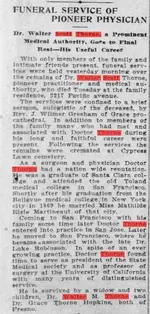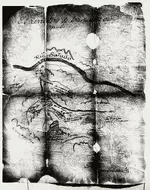Camp McDowell, A.T.
Capt. R.M. Crandal;
I see by your city paper that we are reported as living among the Apache Indians, in the White Mountains, and thinking that the public might construe that notice into something injurious to ourselves. I shall inform you how we came to be among these Indians, and if you think it necessary that the explanation be made public please hand this letter to the editor of the Arizonian:
Last May I started from Socorro, with a party to explore the White Mountains, and the Salt River. On our arrival at Cutero we failed to organize a party of sufficient strength to enter that country, so we turned out attention to the Zunis mountains where we found gold in paying quantities but no water. While in those mountains I learned that two parties of White Mountain Apaches had been into Fort Wingate to see the commanding officer, Col. A. W. Evens, 3rd cavalry, and that there would be a council held by the Apaches and Navajoes at the Ojos Calientas, south of Zunia about 12 miles. I took my party, went to Zunia, and started thence for Fort Wingate, leaving my party at Zunia. I remained at Wingate, with Col. Evens, several days, examined copies of the letters that these Apaches had brought in, consisting of letters from various prospecting parties who had penetrated their country and had been well treated by them. One of these letters was from Dr. Thorn of Limitar, N.M. who said that the Salt River, or Pinal Apaches had driven his party back, and on meeting these Indians of the White Mountains were treated very kindly; and were advised by them not to attempt to go farther west as they would be killed by the other Indians. All these letters spoke highly of this band of Indians, and on my consulting judge Turner, whom I met at Wingate, en route for Prescott, and Colonel Evens, also several other friends, I came to the conclusion to wait and have a talk with these Apaches. <much more follows of adventures with Indians>
I am, dear Bob, Yours truly
C.E. Cooley;






